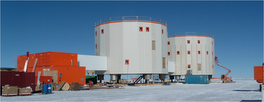Seismology definitions
Here you will find definitions of various seismological terms as they come up in the Sismordia blog. As more content becomes available, these simple definitions will be linked to posts going into greater detail about each topic.
Data recorder / acquisition system = an instrument capable of recording the signal produced by a seismometer. It also has the important task of time stamping the signal, so we can later reconstruct the exact timing of each feature.
Intensity = quantifies the ground shaking at a particular location. It is estimated both from instrumental recordings and the reports of those having felt the earthquake. Intensity values are given using the Modified Mercalli Intensity Scale.
Magnitude = a number that gives the relative size of an earthquake. It is related to the amplitude of the seismic signal. Four magnitude scales are commonly used: ML = local or Richter magnitude; Ms = surface wave magnitude; Mb = body wave magnitude; Mw = moment magnitude. Modern seismologists tend to prefer the Mw magnitude scale as it is applicable to earthquakes of any size.
Seismic source / seismic event = an event which triggers the production of seismic waves. Seismic sources are not limited to earthquakes. Volcanic tremors, explosions, oceanic storms, moving glaciers, iceberg breakups and collisions can all create seismic waves, as can human activity (power generators, transport etc.).
Seismic tomography = the process of making 3D images of the interior of the Earth from the information contained in seismograms.
Seismic waves = elastic waves that are produced by seismic events such as earthquakes. These waves travel through the Earth and along its surface, inducing ground motion which can in some cases create damage.
Seismicity map = map of locations of earthquakes that have occurred within a given time period.
Seismologist = a seismology researcher. Seismologists deploy seismometers, analyse the data they record, and try to deduce information about earthquakes and the Earth itself. They need a good understanding of physics, mathematics and computer programming.
Seismology = the study of earthquakes and the propagation of seismic waves. Seismology research has two broad goals: (1) learning more about how earthquakes happen and (2) learning more about how the Earth is constructed.
Seismogram = a recording of ground motion with time. Seismograms are the raw data used by seismology researchers. They indicate at each instance in time what the motion of the ground was under the sensor (seismometer).
Seismometer / seismic sensor = an instrument capable of detecting ground motion and turning it into a signal that can be recorded. Seismometers are to seismology what telescopes are to astronomy: indispensable!
UTC = Coordinated Universal Time, a universal "time zone" synchronized to Greenwich Mean Time (GMT). Seismic data is always recorded in UTC, so that it is easy to compare the times of seismic wave arrivals across the globe. The time-zone of this blog is also UTC.




1 comment:
This is a useful scientific technology.each topics are clearly explained.its more useful for all technical and nontechnical peoples.
---------------------
Muthu
Sreevysh Corp
Post a Comment